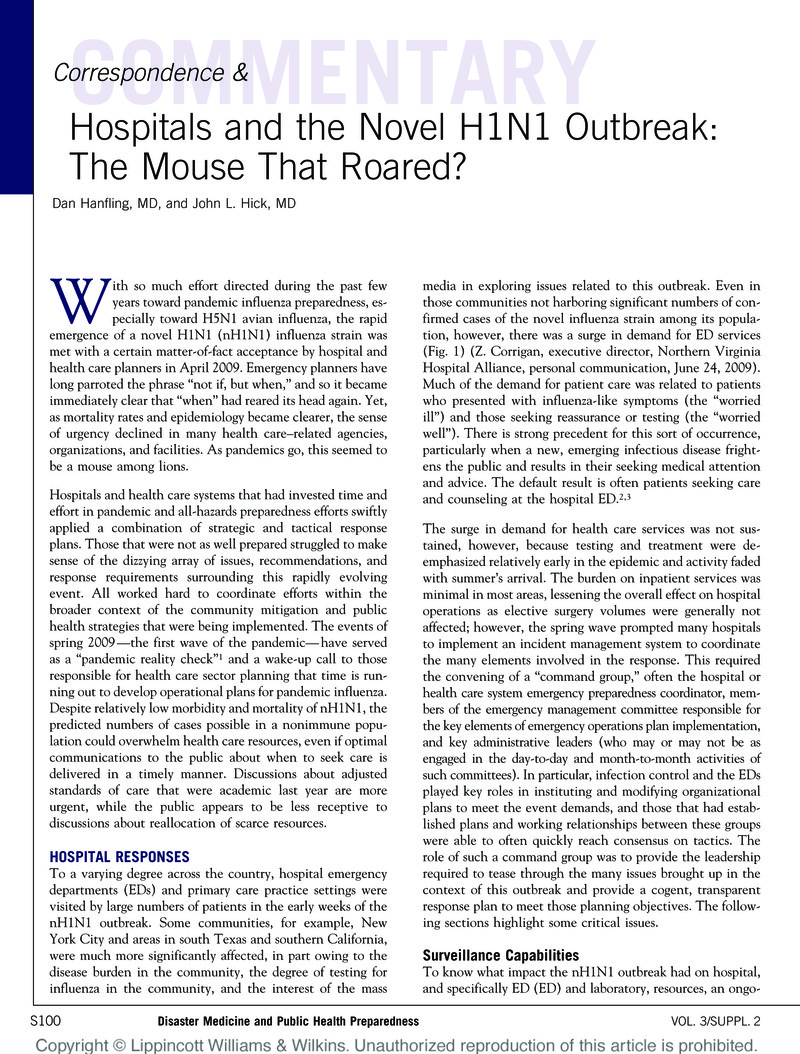Crossref Citations
This article has been cited by the following publications. This list is generated based on data provided by Crossref.
Carlson, Abigail L
Budd, Alicia P
and
Perl, Trish M
2010.
Control of influenza in healthcare settings: early lessons from the 2009 pandemic.
Current Opinion in Infectious Diseases,
Vol. 23,
Issue. 4,
p.
293.
Schult, Tamara M.
Awosika, Ebi R.
Hodgson, Michael J.
and
Martinello, Richard A.
2011.
2009 Influenza Pandemic Impact on Sick Leave Use in the Veterans Health Administration: Framework for a Health Care Provider–Based National Syndromic Surveillance System.
Disaster Medicine and Public Health Preparedness,
Vol. 5,
Issue. S2,
p.
S235.
Kamradt‐Scott, Adam
2014.
The Handbook of Global Health Policy.
p.
537.
Devereaux, Asha V.
Tosh, Pritish K.
Hick, John L.
Hanfling, Dan
Geiling, James
Reed, Mary Jane
Uyeki, Timothy M.
Shah, Umair A.
Fagbuyi, Daniel B.
Skippen, Peter
Dichter, Jeffrey R.
Kissoon, Niranjan
Christian, Michael D.
and
Upperman, Jeffrey S.
2014.
Engagement and Education.
Chest,
Vol. 146,
Issue. 4,
p.
e118S.



